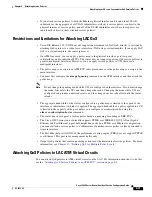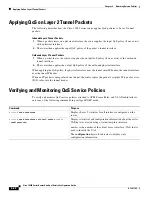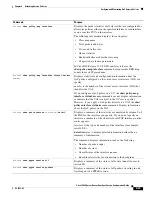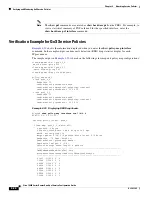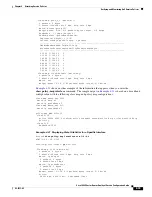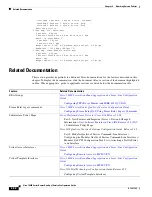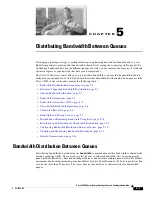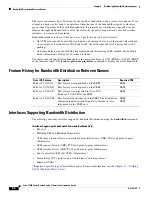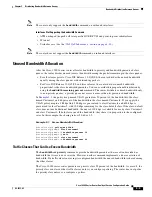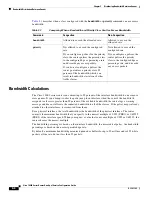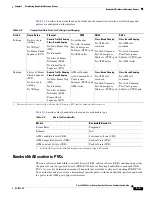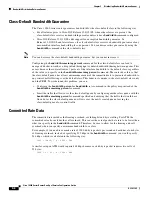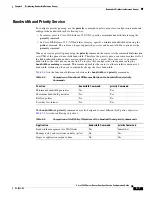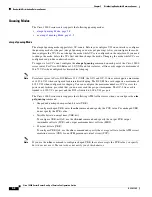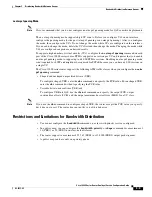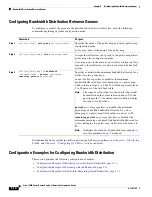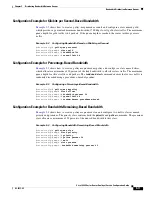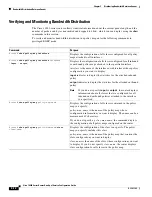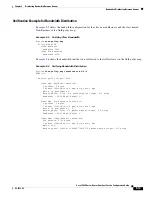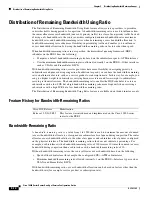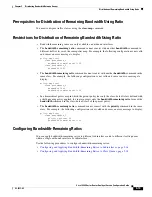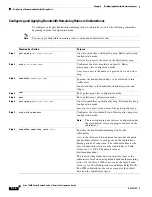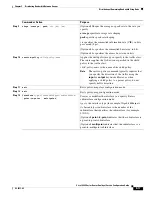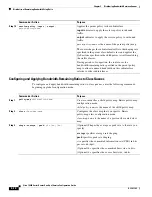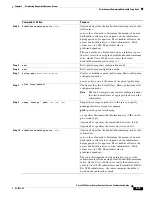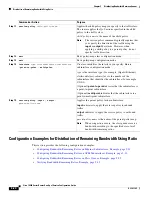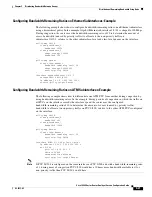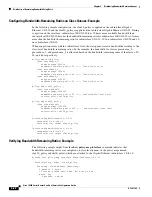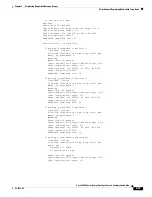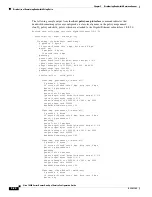
5-9
Cisco 10000 Series Router Quality of Service Configuration Guide
OL-7433-09
Chapter 5 Distributing Bandwidth Between Queues
Bandwidth Distribution Between Queues
no atm pxf queuing Mode
Note
Cisco recommends that you do not configure no atm pxf queuing mode for QoS-sensitive deployments.
The no atm pxf queuing mode supports high VC counts. Before you configure VCs on an interface,
configure the queuing mode for the port (atm pxf queuing or no atm pxf queuing). After you configure
the mode, then configure the VCs. Do not change the mode while VCs are configured on the interface.
If you need to change the mode, delete the VCs first and then change the mode. Changing the mode while
VCs are configured can produce undesired results.
To support a high number of virtual circuits (VCs), configure the
no atm pxf queuing
command on each
port of the Cisco 10000 series router. PPPoA supports one session per VC and requires that you enable
no atm pxf queuing mode to support up to 64,000 PPPoA sessions. Enabling no atm pxf queuing mode
is not required for L2TP and might not be required for PPPoE because you can have 64,000 sessions on
a single VC.
The Cisco 10000 series router supports the following ATM traffic classes when you configure the
no atm
pxf queuing
command:
•
Shaped and unshaped unspecified bit rate (UBR)
To configure shaped UBR, enter the
ubr
command and specify the PCR value. For unshaped UBR,
enter the
ubr
command without specifying the PCR value.
•
Variable bit rate-nonreal time (VBR-nrt)
To configure VBR-nrt QoS, use the
vbr-nrt
command and specify the output PCR, output
sustainable cell rate (SCR), and the output maximum burst cell size (MBS) for a VC class.
Note
If you use the
ubr+
command to configure shaped UBR, the router accepts the PCR value you specify,
but it does not use it. The router does not notify you of this behavior.
Restrictions and Limitations for Bandwidth Distribution
•
You cannot configure the
bandwidth
command on a class with priority service configured.
•
In a policy map, you can configure the
bandwidth
,
priority
, or
shape
command for a maximum of
14 (PRE1) or 30 (PRE2) non-class-default classes.
•
The router supports a maximum of 32,767 (PRE1) or 128,000 (PRE2) output packet queues.
•
A policy map can have only one priority queue.

